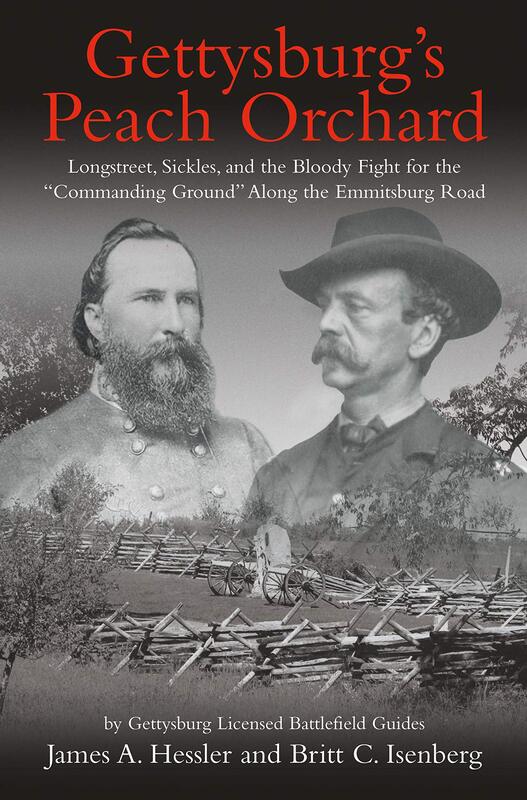James A. Hessler and Britt Isenberg
Savas Beatie, 2019, 416 pp., $34.95
ISBN: 978-1-61121-455-0
Image courtesy of amazon.com
For many people, the Gettysburg Campaign is a subject of fascination. And with all of the books written about the battle and the steps leading up to it, and even those in the aftermath, some tidbits and details still bear writing about. The overall narrative of the battle has changed throughout the years which is one of the major reasons that people continue writing. But I have always felt that the Peach Orchard is one section of the battle that I’ve always wanted to know more about. In this new work by James A. Hessler and Britt C. Isenberg, the Peach Orchard comes alive.
James A. Hessler is the author of Sickles at Gettysburg and Pickett’s Charge at Gettysburg. He was one of the primary content designers for the Gettysburg app for the American Battlefield Trust. Hessler has also written several articles for publication for the American Battlefield Trust. Britt C. Isenberg has worked for the Gettysburg National Military Park since 2014 and has published many Civil War periodicals. He is the author of The Boys Fought Like Demons which chronicled the 105th Pennsylvania Infantry. Both Hessler and Isenberg are Licensed Battlefield Guides at Gettysburg.
As I said in the introduction, I feel like the Peach Orchard often gets ignored when talking about the action of the second day at Gettysburg. But here, we have an in-depth look at the actions which were taken by all the major players. The book focuses on two major figures, Generals Longstreet and Sickles, and the coverage on Sickles talks to his advance that has sparked a great deal of controversy throughout the years. I very much enjoyed the analysis of the advance made by Sickles and the pressure it had placed on Longstreet. The text makes an interesting point that while Ewell and Hill’s corps were celebrating the success of the first day of combat, Longstreet’s men were mainly on the march and for that, there is an interesting look into the overall mind of not only the commanders but the soldiers as well. When the narrative reaches combat, it is handled quite well mainly in the understanding of the minutia of what happened there and the research is quite well done. Hessler’s previous work on both Sickles and Pickett’s Charge only heightens the intricacies of what is presented here. In some way, there is a grand narrative being written about the battle when reading all three of Hessler's works as a whole.
I highly recommend this book, especially to Gettysburg enthusiasts. I think that it is a welcome addition to the scholarship for a battle deeply covered. The blend of military tactics with human interest stories is what makes books like these stand out. The maps are wonderfully drawn and understandable, and the narrative is structure is quite good in the manner of history. Overall, Hessler and Isenberg should be applauded for the work they have done here. This should be in every Gettysburg library for both scholars and enthusiasts.

 RSS Feed
RSS Feed
